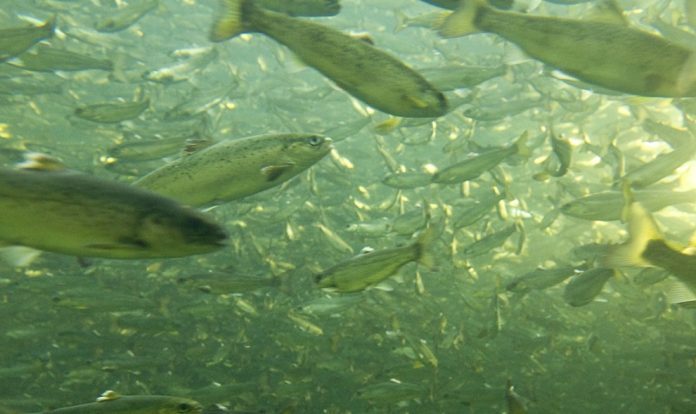Norway-based vaccine makers have reacted to a press release published by SalmonBusiness that presented select findings from a University of Waterloo professor whose work — and the work of six Chilean scientists compiled in the same article — suggests vaccines “don’t protect fish”.
Questions raised by the press release — which said research “showed vaccinated fish tend to show more symptoms when contracting diseases” and that vaccinated fish had “a higher death rate” once exposed to sea lice — produced a response from Bergen-based MSD Animal Health and Pharmaq, another Norway-based vaccine producer.
So, do fish show more symptoms of other diseases once vaccinated?
“In general, of course not. However, the vaccinating process of course includes handling of the fish which will be somewhat stressful for the animal if vaccination is not properly performed,” MSD’s Norway general manager, Dafydd Morris, wrote in a letter to SalmonBusiness.
“Bad vaccination quality or any bad management triggering high level of stress can, combined with fish being infected with something from the start (only healthy fish should be vaccinated) or is put back in water with pathogens can trigger infections,” Morris said, adding that the stress of poorly managed vaccination “can lead to immune suppression and death”.

Vaccine battles
The Canadian-Chilean study provided evidence, as well, of the “detrimental effects of coinfection on survival, growth, bacterial load” of fish trying to fight multiple threats while vaccinated.
“Even the most protective vaccine can be compromised if the challenge pressure is too high,” Morris wrote. He pointed out that when a likely drop in vaccine coverage occurred in northern Norway in 2012, it caused an increase of cold water vibriosis (or “Hitra disease”), a sickness that vaccines had kept under control for almost 25 years.
“After several years with only a few or no reported cases of the disease, suddenly 18 farms were affected,” Morris said, explaining that, as with the study, that “the challenge pressure had been allowed to build up”.
Tricky bacteria
In the “Waterloo” study, researchers tested the efficacy of a vaccine for the bacterial pathogen Piscirickettsia salmonis by comparing the reaction of vaccinated and non-vaccinated Atlantic salmon when exposed to the sea louse Caligus rogercresseyi in the lab. They found that although the number of bacteria living inside the fish was much lower in vaccinated fish, they showed many more signs of infection and a higher death rate compared with the unvaccinated group once exposure to sea lice.
“We know that Piscirickettsia salmonis is a difficult pathogen to make a vaccine with efficacy levels comparable to other bacterial diseases like for instance Furunculosis,” Morris wrote, adding that P. salmonis is “an intracellular bacteria, and intracellular bacteria are known to be difficult to make vaccines for with high protection”, including for humans.

Weaker fish?
The Waterloo study concluded that once vaccinated, salmon were “unable to fight off multiple diseases at once”.
“Fish have a limited number of resources to respond to an illness, so their immune system makes choices,” wrote Dr. Brian Dixon, the Canada Research Chair in Fish and Environmental Immunology who, along with several others, penned the vaccine-study article.
Morten Nordstad, president of Pharmaq, said the assertions made in the Canadian-Chilean study didn’t reflect his fish-fitness firm.
“Vaccines in fish are used with great success in all salmon-producing countries and have been an important foundation for sustainability in modern salmon production around the world,” Norstad said, adding, “There are still challenges related to disease that are not yet solved, but new vaccines are being researched.”
Fish-based approach
He answered another call made in the press release that the “human model” for vaccine production be abandoned in favor of something else.
“Vaccines for fish are developed for fish with test models that are appropriate for fish. There are today many vaccines in the market constituted differently, with some vaccines protecting against up to seven illnesses caused by both bacteria and viruses.”
Read European first, as DNA-derived vaccine used in Norway
After being shown the Canadian research and the press release “promoting” it, he concluded the former offered a “decidedly more nuanced picture when it comes to vaccination.”

Norstad brushed aside talk of links between sea lice vulnerability and vaccinations, saying “there’s no connection”.
Morris cited current the success of vaccines in ridding the industry of antibiotics.
Banished antibiotics
“Efficient and safe vaccines have made antibiotics a non-issue for Norwegian salmonid aquaculture,” Morris said.
“The use of antibiotics in Norwegian aquaculture has dropped from 48 (tonnes) of active AB ingredients in 1987 to a jaw-dropping 301 kilograms in 2015.
“The production of salmon and trout had in the same time span has gone from less than 100,000 t in 1987 to 1.3 million t in 2015.”


